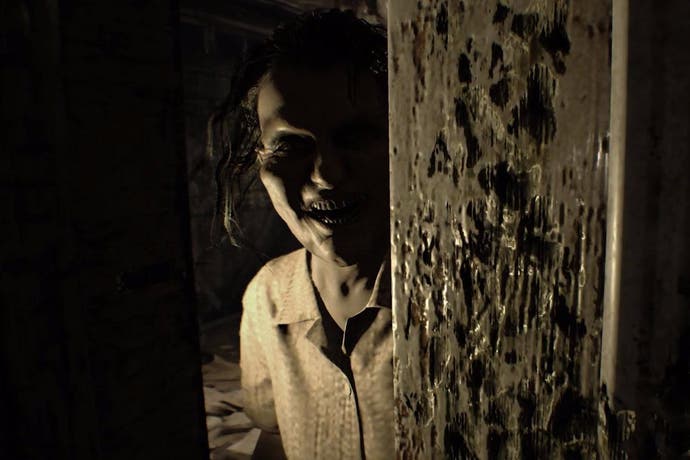Resident Evil 7 at 4K: does resolution really matter?
The PC ultra HD experience takes on PS4 Pro's 1260p image.
PlayStation 4 Pro's native 1260p rendering resolution for Resident Evil 7 turned out to be something of a surprise, representing a relatively slight 36 per cent uplift in pixel-count over the base PS4 version of the game. It's a curious choice for a console designed to service the new wave of ultra HD displays, and that led us to wonder - just how does the Pro mode compare to a full-fat 4K presentation? For a game with RE7's heavily stylised aesthetic, to what extent does a high native resolution actually matter?
Given the soft 'found-footage' nature of the game, there could be diminishing returns over higher pixel counts, with clarity and intricate detail masked by the heavy post-process pipeline. In many ways, RE7 produces an intentionally 'lo-fi' image, but on the flip-side, the boost in resolution could possibly flesh out more detail from the existing assets alongside greater precision in rendering effects - essentially keeping the film-like image intact while adding additional refinement to the core aesthetic.
With Resident Evil 7 geared towards running at 60fps, one might assume that jumping from 1080p to 4K might not require ultra high-end hardware to get the job done, but that isn't the case here. A locked 60fps at max settings is somewhat off the table, but with an i7 paired with an overclocked Titan X Pascal it's possible to achieve a mostly solid 4K60 during more demanding scenes. And as it turns out, brute-forcing ultra HD resolution does indeed result in a considerable upgrade over the PS4 Pro's higher resolution mode, although the console version can hold up well in many scenarios - not a bad turn-out considering that our PC set-up is handing in a 2.9x increase in raw pixel-count.
The most immediate improvement in running at native 4K on PC comes with greater clarity across finer details, such as the leaves on trees, and across distant texture detail - which resolves more cleanly with the additional pixel precision available. Image quality also steps up a notch, with fewer rough edges across geometry providing a cleaner look compared to the upscaled presentation on PS4 Pro. However, overall expectations need to be managed here: Resident Evil 7 features a soft-focused look and even when running at 4K the game the game never features an ultra-sharp image one might expect from a 2160p resolution. Instead, intra-pixel clarity takes president over per-pixel sharpness when viewed on a 4K screen, while post-process effects work appears more refined and less intrusive, having less of an impact on clarity across the scene without compromising the found-footage aesthetic.
What's surprising here is just how well the PS4 Pro version holds up to the PC game in darker areas. Of course, image quality appears softer on Sony's machine due to the upscale, but detail levels are close, and the presentation still features a clean look that is rarely present with heavily upscaled imagery. This is down to Capcom's use of temporal anti-aliasing, which does a very good job of preventing visible artefacts across the scene, with additional softness the main downside in resizing the 1260p image to 4K. Clearly, resolution is less important in lower contrast scenes when backed up with a good anti-aliasing solution. It's not enough to convincingly deliver a faux-4K image, but does provide a noticeable boost over the standard 1080p offered by the base PS4.
Of course, when you move to more vibrant locations or mid-brightness scenes, the benefits of the PC's native 4K image are more pronounced. The game appears sharper, with higher quality textures showing more nuanced detail up close, while various effects also take advantage of the additional pixel precision to deliver more refinement. For example, shadows feature more in the way of dither and light stair-steps on Pro, while on PC these effects look slightly smoother. Lighting buffers also resolve at a higher resolution, lacking the slightly soft haloing around characters during some cut-scenes. These differences are still present when running the PC game at 1080p, though the reduced pixel-precision means the effects don't stand out as much.
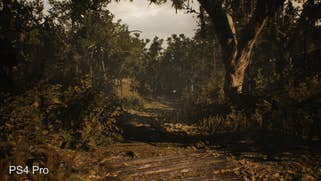
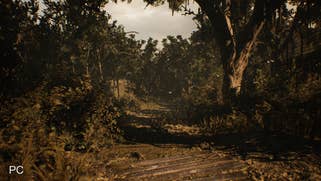
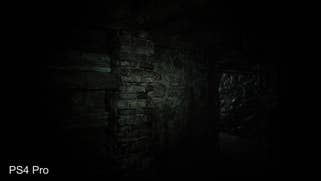

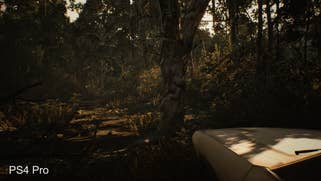

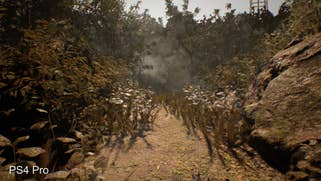
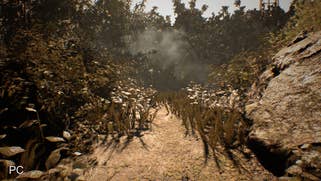


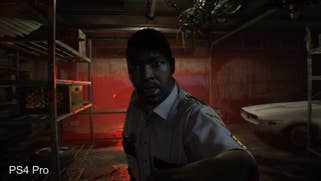
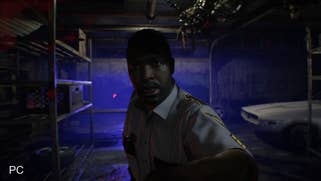
Playing through the PC version for a second time it is also apparent that the game features a few refinements over the PS4 Pro version. For example, additional reflections are present across some objects when exploring indoor locations that are absent on console. The lighting model is also enhanced in outdoor locations, with some scenes featuring brighter specular highlights and stronger use of bloom that provides more intense light reflections across the ground.
The improved effects appear sporadically through the game so don't appear all the time, but look closely and there are a few tweaks here and there. Capcom's approach means that the PC and Pro versions are very closely matched, with resolution the most obvious dividing factor. And indeed, this is by far the most significant element in delivering an improved visual experience over console, although the upgrade here doesn't appear as pronounced compared to games featuring a sharper, more refined art direction.
The lines between finite resolution and detail are becoming increasingly blurred as developers choose to bestow more filmic presentations in their games. Increasingly, raw pixel sharpness is deliberately avoided in favour of more nuanced detail thats exist in a smooth image that takes on a more organic, 'analogue' feel. This kind of presentation still takes advantage of higher pixel counts, but not quite in the same way as titles we've seen on prior console generations.
Combined with dynamic resolution scaling and various reconstruction techniques, such as checkerboard rendering and temporal super-sampling, having a 1:1 pixel-mapped native resolution image is arguably less important than it's been in the past. In many ways, it's the way forward for games taking a more filmic approach to image quality, using the extra GPU power saved from rendering at lower pixel counts than native 4K to push other aspects of the graphics pipeline, such as lighting or shader effects. It's not the right approach for every game, but when you play games like Call of Duty: Infinite Warfare on PS4 Pro, it's difficult to argue with the quality of the results.
The pixel-count is perhaps too low on Resident Evil 7 for its Pro implementation to get the best out of a 4K screen, but in low contrast scenes the gap is smaller than you might expect - and the upscaled presentation still looks fine overall. The use of temporal anti-aliasing is enough to create a smoothly upscaled image, but with only a modest boost in resolution there are still a lot of interpolated pixels to create, resulting in some roughness that isn't present in titles that use checkerboarding or temporal injection to reach 1800p or 4K. In that respect, the 4K Pro upgrade in Resident Evil 7 doesn't always provide a large upgrade over 1080p, but when looking at the soft focused native 4K image on PC it's clear that pixel counts alone don't necessarily provide a revelatory increase in clarity.
That said, going native 4K on PC still delivers a tangible improvement, giving the game clearer, more refined look while maintain the gritty, video-like presentation. Combined with HDR and a slick 60fps update, it's the best way to experience Resident Evil 7 if you are not interested in VR. However, hitting a solid 4K60 at max settings requires enormous amounts of GPU power, so it's not a workable target for the mainstream PC gamer. That said, the game does feature a resolution scaler, which should work well when combined with the title's excellent temporal anti-aliasing solution. So, if native ultra HD is off the cards when targeting 60fps on your PC set-up, the fact that the look of the game isn't entirely reliant on native resolution can work to your favour - experimenting with pixel-counts between 1080p and 4K could provide good results without the need for extreme PC hardware.
